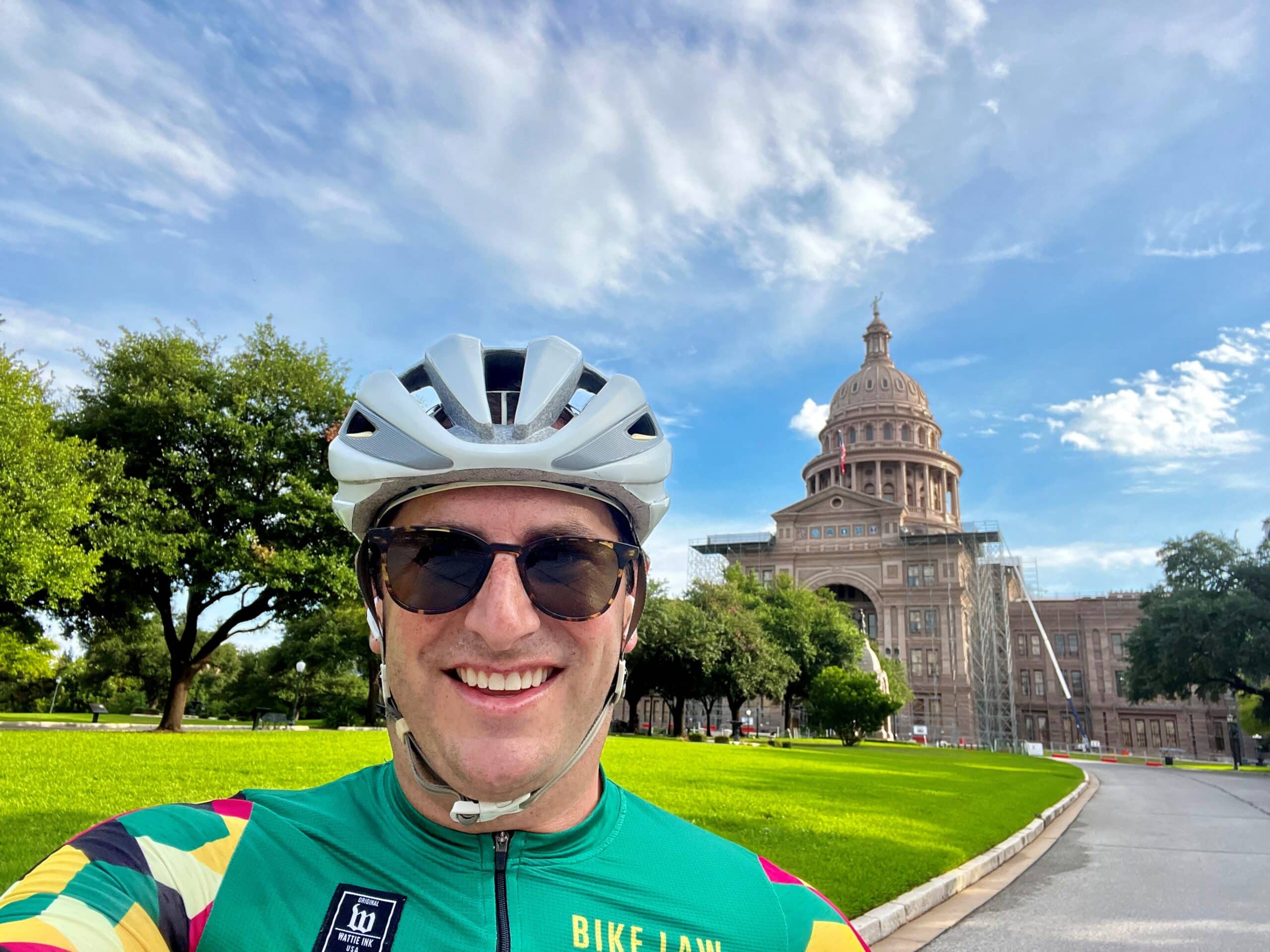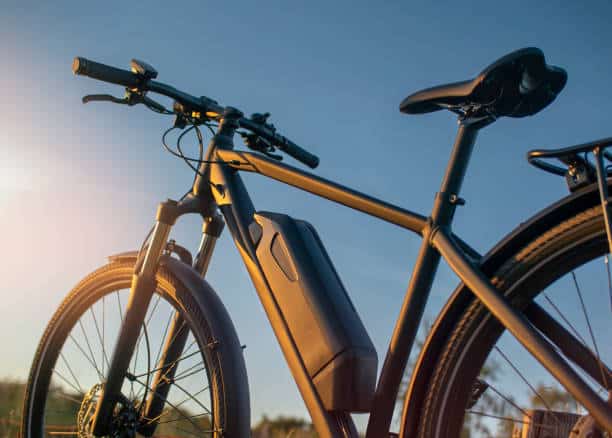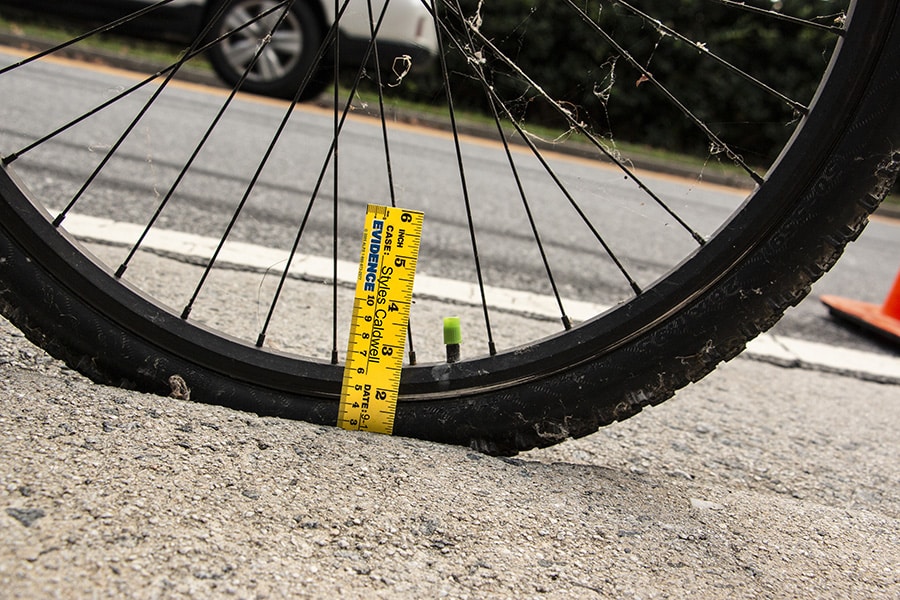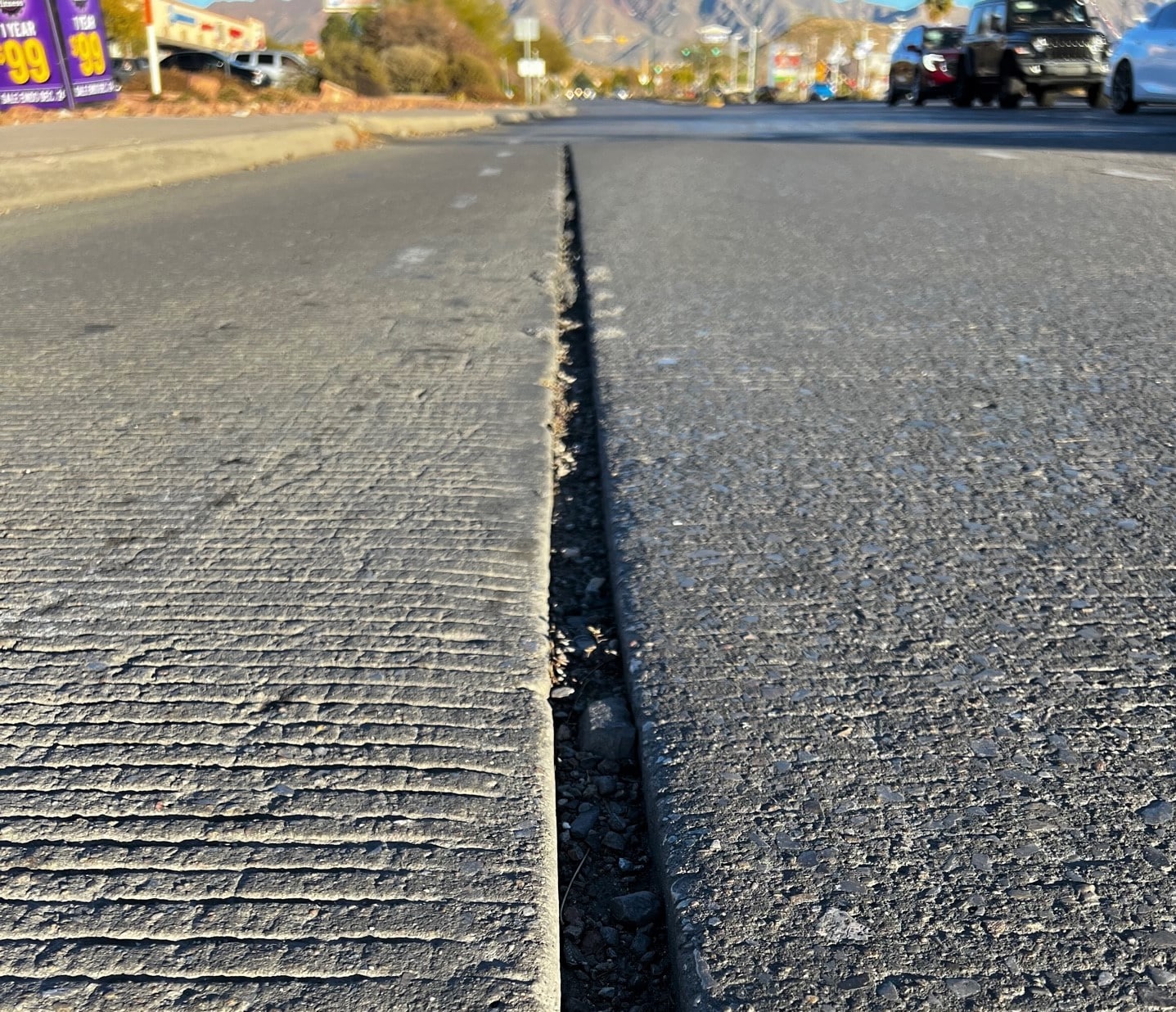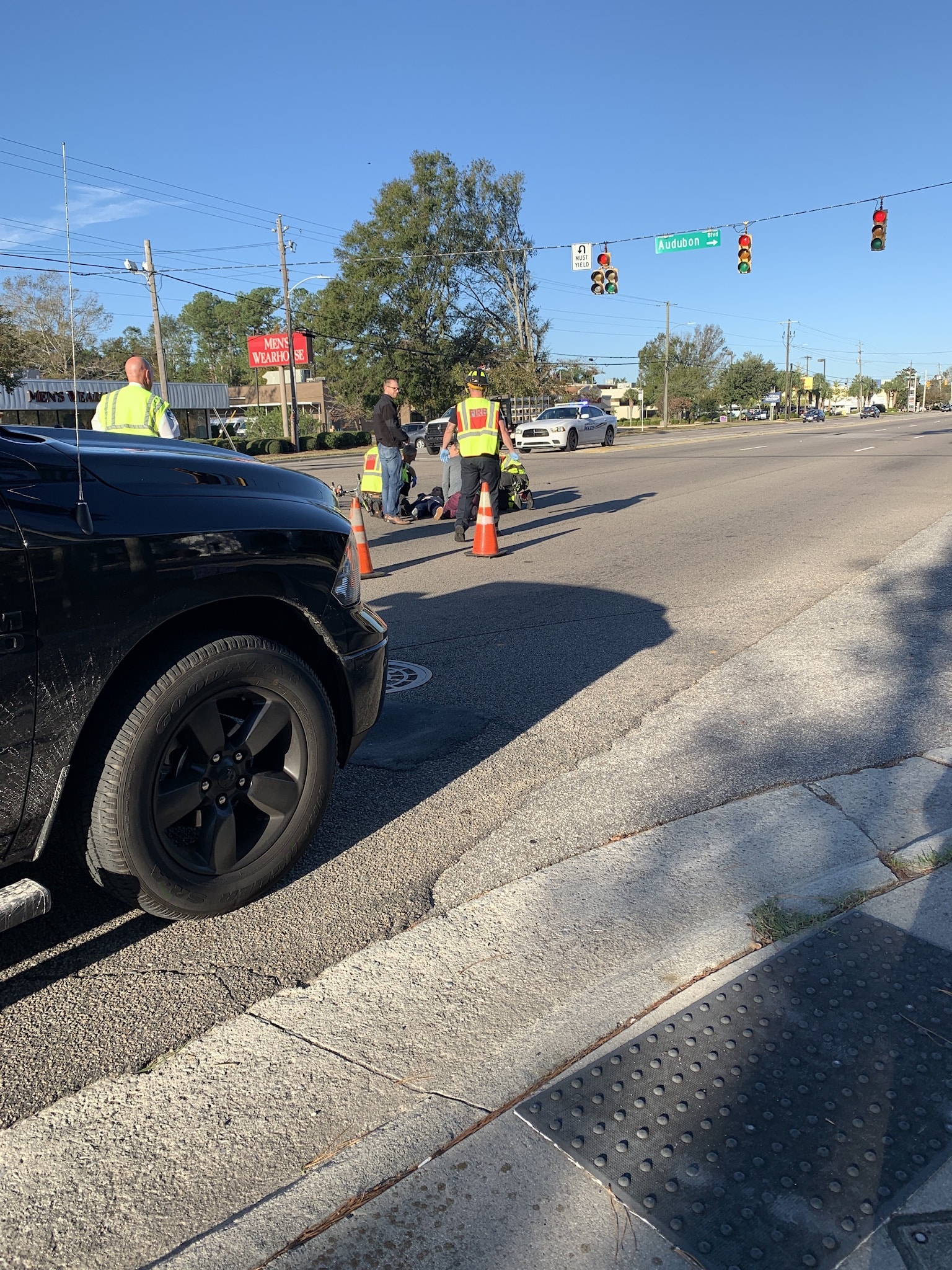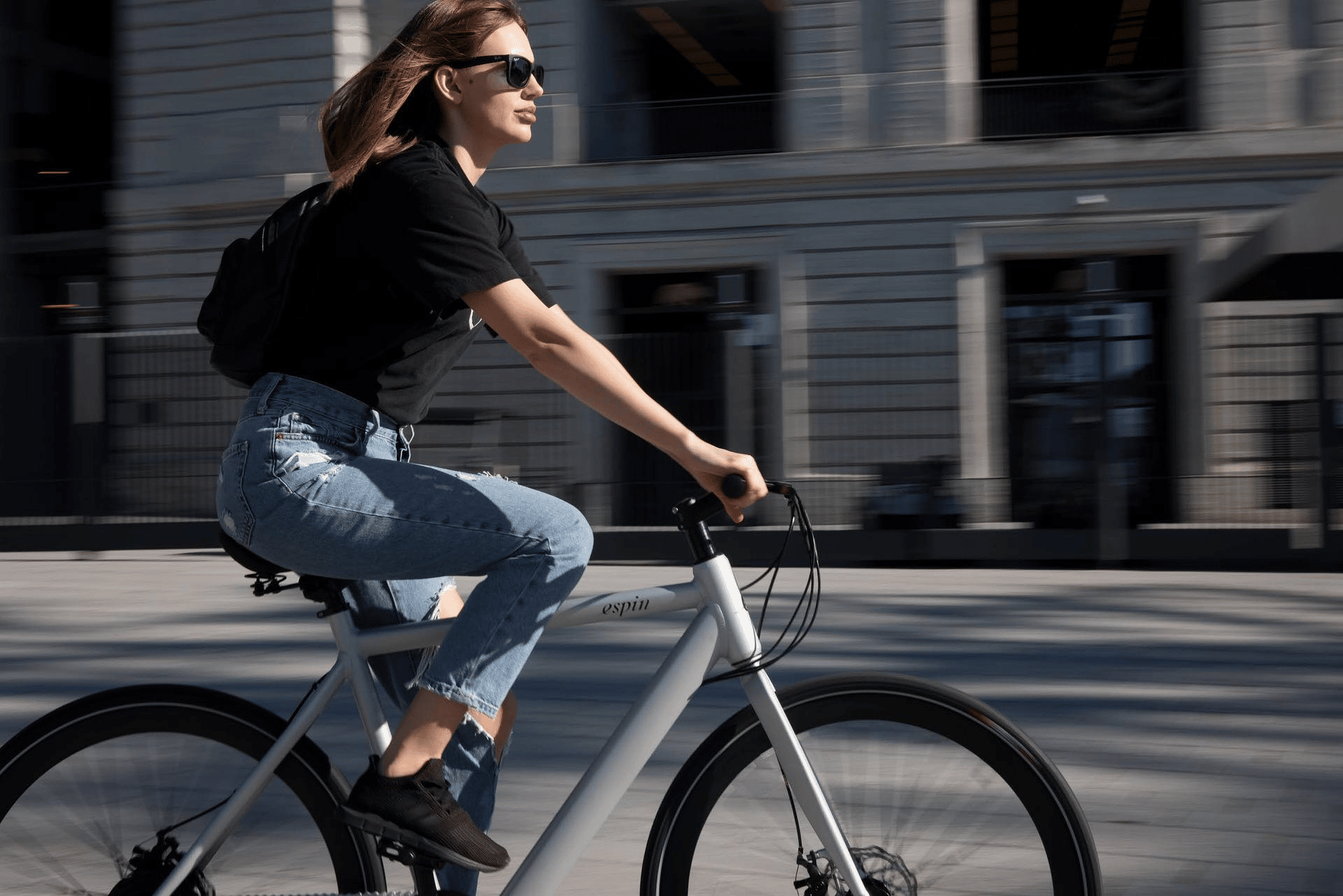After riding for years and practicing bike law in Ontario, I felt it important to put together a brief overview of the laws that apply when riding in Ontario. I hope it helps and if you have any questions or need help, please feel free to contact me through the Ontario Bike Law page.
What happens if you are injured after being hit by a car on your bike?
In Ontario, a cyclist can claim what are known as no-fault accident benefits and he or she is also entitled to pursue a potential legal action against the negligent driver. Many individuals think that no-fault means they cannot sue. That is not true. Depending on who is at fault for a crash, an injured cyclist can claim both no-fault benefits and start a lawsuit. It does not matter if the cyclist is insured or not.
What if the cyclist is partly to blame for the Crash?
It does not matter. An injured person is entitled to no-fault accident benefits regardless of who is at fault in the crash. Depending on how the crash happened, they may also be able to sue if the driver was at fault, or another party, such as if the road authority were partial to blame.
Who pays the no-fault accident benefits?
If you have an automobile policy or are a listed driver on someone’s policy, you can claim accident benefits through that policy, even if you were not in that car at the time.
If you do not have an automobile policy and are not listed driver on someone else’s policy, you claim accident benefits from the policy of the owner of the vehicle that was involved in the collision with you. If the vehicle that struck you did not have valid insurance on it, or if that driver did not remain at the scene (hit and run), you may claim accident benefits through any other vehicle involved in the crash that did have valid insurance.
If none of the above situations apply, for example in a hit and run crash between a cyclist and a car, you must claim through the “last resort,” which is the Motor Vehicle Accident Claims Fund. This is administered by the provincial government, and the claims are handled for them through an independent adjusting firm. Legally, if you have nowhere else to claim accident benefits, you are entitled to the same benefits through the MVAC Fund.
The address of the fund is:
Motor Vehicle Accident Claims Fund
P.O. Box 85, 5160 Yonge St.
Toronto ON M2N 6L9
(416) 250-1422
1-800-268-7188
If you must claim accident benefits through the MVAC Fund, contact them as soon as possible to advise them. Before they will set up a claim for you, they will need something in writing from you that states you are not the owner of a vehicle and are not otherwise entitled to claim for accident benefits through an insurance policy.
How do you claim no-fault accident benefits?
No-fault accident benefits are claimed in addition to a lawsuit if you decide to pursue one.
Accident benefits coverage is provided by law under every automobile insurance policy in Ontario. The coverage provided under an automobile insurance policy is standard among insurance companies because the regulations (Statutory Accident Benefits Schedule or SABS) are provincially mandated.
When making a claim for accident benefits, you must first notify the insurance company within 7 days or as soon as practical after the crash occurred.
The insurance company will then send you an Application package which you must complete within 30 days after receiving the forms and return them to the insurance company. No benefits will be payable until you complete the Application. If the Application is submitted outside the 30 days you will have to provide a reasonable explanation. If you have a private insurance policy or an employment benefits package, you should apply for these benefits as well since accident benefits only pay for what is not covered under these types of plans. It is important to know that the insurance company paying the accident benefits does not have a legal right to obtain a statement (written or recorded) from you about the crash. However, you do have to provide them with reasonable information relevant to the benefits being claimed. Since a written or recorded statement taken by the insurance company may be used against you or produced in your lawsuit, it is recommended that you do not give one.
Detailed instructions are provided on the Application forms and the timelines for submitting those forms are also listed. The Application will include a Disability Certificate that must be completed in order to qualify for a number of benefits. The Disability Certificate, which is prepared by a health practitioner, must be submitted within 10 days of the Application. This is a very short timeline and you should explain to your doctor or health practitioner the importance of completing the form in a timely manner.
In order to receive medical and rehabilitation treatment, a health professional will be required to prepare, sign and submit a Treatment Plan. A Treatment Plan is a prescribed form that must be used. An insurer can refuse to pay for treatment unless a Treatment Plan is submitted. In cases involving certain soft tissue injuries there are Pre-Approved Framework Guidelines that may apply and a fixed package of benefits is provided without the need of submitting Treatment Plans.
If you require an aide or attendant to help you, attendant care benefits are available, however special forms must be completed by an occupational therapist or registered nurse to obtain these benefits.
If you are seeking payment for income replacement benefits you must have your employer submit an Employers Confirmation Form in addition to the Disability Certificate described above.
It is very important that you read the Application carefully and review all the benefits that may be available to you.
Once the insurance company receives your Application, they are required to respond to your Application within 14 days. The insurance company may require that you undergo an insurer’s medical assessment at the insurer’s expense. The insurance company must give you notice of the medical assessment. The notice must include:
- The reasons for the examination;
- The type of examination that will be conducted;
- Whether your attendance is required during the examination; and
- The name of the assessors who will conduct the examination, the regulated health professions to which the assessors belong and their titles and designations indicating their specialization, if any, in their professions.
If your attendance is for more than one day, the insurance company must provide you with the above information for the subsequent days. Following the assessment, you will be entitled to a report setting out the findings of the assessment. If your benefit is being denied, you are entitled to obtain a rebuttal report from your treating professional subject to certain restrictions and timelines.
If your insurance company makes a decision to deny you benefits and you disagree with it, you may dispute the outcome by filing an Application for Mediation with the Financial Services Commission (“Commission”) of Ontario within two years of the insurer’s refusal. After an Application for Mediation is filed, a mediator is appointed by the Commission. The mediator will conduct a mediation with you and the insurance company. At the end of the mediation, the appointed mediator will prepare a Mediator’s Report which will set out what results of the mediation. If the issue is not resolved at the mediation you may then file:
- An Application for Arbitration with the Commission within 2 years of the refusal to pay the benefit or within 90 days of the date of the Report of the Mediator; or
- Start a lawsuit against the insurance company within 2 years of the refusal to pay the benefit or within 90 days of the date of the Report of the Mediator.
What potential no-fault accident benefits are an injured cyclist entitled to?
When a cyclist is injured in a collision with a vehicle, the injured cyclist will be entitled to make a claim for accident benefits regardless of whether or not the cyclist was at fault. Depending on various circumstances, the payment of the benefits will be from one’s own automobile insurer (i.e. if the cyclist also drives), the insurer for the vehicle involved in the collision, or the Motor Vehicle Accident Fund if no insurance is available. Potential no-fault benefits available are listed below.
Income Replacement Benefits
Beginning seven days after the crash, an injured person is entitled to receive weekly income replacement benefits for up to the first 104 weeks after a collision in the following circumstances:
- If the injured person was employed on the date of the crash and thereafter suffers a substantial inability to perform the essential tasks of his or her employment.
- If an injured person was not employed at the time of the crash, but worked at least 26 of the 52 weeks before the crash (or was receiving Employment Insurance benefits at the time of the crash) and thereafter suffers a substantial inability to perform the essential tasks of the employment in which the person spent most of his or her time during the 52 weeks before the crash.
An injured person can still receive income replacement benefits after 104 weeks if the person suffers a complete inability to engage in any employment for which he or she is reasonably suited by reason of education, training or experience.
An injured person receives no income replacement benefits for the first 7 days after a collision and thereafter, as long as a person qualifies, he or she will receive 70% of gross (before deductions for taxes) weekly income. The maximum that can be received is $400.00 per week, unless optional coverage was purchased and, if it was, the maximum a person can receive from his or her auto insurance company is $1,000.00 per week.
These benefits are available to you up until age 65 and then they start to reduce on a gradual basis.
Non-Earner Benefits
An injured person who was not working at the time of an crash and who does not qualify for income replacement benefits may be entitled to receive a non-earner benefit in the amount of $185.00 per week. In order to qualify for this benefit, the injured person must suffer a complete inability to carry on a normal life. Nothing, however, is payable for the first 26 weeks after the crash. If a person was a student at the time he or she was injured or had completed his or her education in the year before the crash and was not yet employed in a capacity that reflected his or her education and training, these benefits increase to $320.00 per week starting 104 weeks after the crash.
Caregiver Benefits
An injured cyclist may be entitled to a caregiver benefit if he or she were living with and were the primary caregiver for a person in need of care and were not being paid for these activities. However, an injured person is only entitled to this benefit if, as a result of the crash, he or she suffered a catastrophic impairment. The definition of catastrophic impairment is set out in the legislation. This benefit cannot be received in conjunction with the income replacement benefit or the non-earner benefit. The injured person must choose this benefit instead of the income replacement benefit or the non-earner benefit. The maximum amount of the caregiver benefit is $250.00 per week for the first person in need of care plus $50.00 per week for each additional person in need of care. This benefit is only payable after 104 weeks if the injured person is suffering a complete inability to carry on a normal life.
Medical & Rehabilitation Benefits Not Covered by OHIP or other Medical Plan
An injured cyclist is entitled to receive up to $50,000.00 in medical and rehabilitation benefits for expenses, which are not covered by OHIP or some other health or disability plan, incurred up to 10 years after the crash. If a person’s injury is a “minor injury” as defined in the Minor Injury Guidelines, a person is entitled to receive $3,500.00 in medical and rehabilitative benefits. If a person’s injury is catastrophic as defined by the Insurance Act, such as a serious brain injury or spinal cord injury or some other kind of catastrophic injury, a person is entitled to receive $1,000,000.00 in medical and rehabilitation benefits and these are payable over the person’s lifetime and not limited to 10 years. If optional increased coverage was purchased by an injured person, the payments discussed in this paragraph may be higher.
Attendant Care Benefits
An injured cyclist can receive up to $3,000.00 per month for two years or a maximum of $36,000.00 for attendant care benefits. In a catastrophic case, an injured cyclist can receive up to $6,000.00 per month up to a maximum of $1,000,000.00 and there is no time limit. If optional increased coverage was purchased, these benefits may be higher.
Expenses of Visitors
A person who visits an injured person is entitled to payment of all reasonable and necessary expenses incurred as a result of the crash during the injured person’s treatment or recovery. These expenses are limited to family members and other individuals who were living with the injured person at the time. There is no payment after 104 weeks unless the injury is catastrophic.
Housekeeping and Home Maintenance Benefits
An injured cyclist that suffers a catastrophic impairment as defined by the Insurance Act can also claim a housekeeping benefit. The housekeeping benefit is paid up to a maximum of $100.00 per week for reasonable expenses incurred for housekeeping and home maintenance if the injured person suffers a substantial inability to perform these services and the injured person performed these services before the crash. These benefits are paid over the injured person’s lifetime.
What happens if they deny my no-fault accident benefits?
Where the payment of specific claims are denied in whole, or in part, by the accident benefits insurance company, the injured cyclist then has a right to make an Application for Mediation over the unpaid claim at the Financial Services Commission of Ontario and if the unpaid claim is not resolved at mediation, the injured cyclist then has the option of proceeding in one of two ways: 1. the cyclist can make an Application for Arbitration at the Financial Services Commission of Ontario, or 2. the cyclist can start a lawsuit in the Superior Court of Ontario. You should contact a lawyer to help you decide how to proceed. The next section describes when and for what you can sue.
Can the cyclist also start a lawsuit against the driver of the car that hit them?
No-fault accident benefits are claimed in addition to a lawsuit; they are not exclusive to each other. In order to sue, it must be possible to prove that the driver is at least partially at fault in the crash. Finding witnesses at the time of the crash may later be very valuable for this purpose because witnesses can be critical to proving fault. Witnesses at the scene often disappear and are difficult to subsequently find even when an investigator is sent out, so having multiple witnesses is better than having only one.
What compensation can the injured cyclist sue for against the negligent driver?
In a lawsuit for damages, the cyclist can sue the driver and owner of a vehicle for potential damages (compensation) that include the following:
- Non-pecuniary general damages for pain and suffering, loss of enjoyment of life, and loss of amenities
- Past and future loss of income or earning capacity
- Loss of household and handyperson capacity
- Future cost of car
In addition, an injured cyclist is entitled to make a claim for certain out of pocket expenses not paid for by the no-fault benefit (accident benefit) insurance company. The amount claimable under this category is usually very insignificant compared to the other potential categories of damages.
When can an injured cyclist sue for Pain & Suffering, loss of enjoyment of life, and loss of amenities?
These damages are generally referred to as damages for pain and suffering. Before any cyclist can successfully sue for this category of damages, he or she must prove that his or her injury “meets the threshold”. This can only be done if the person can show that he or she has sustained one of two types of injury:
- Permanent serious impairment of an important physical, mental or psychological function; or
- Permanent serious disfigurement.
If an injured person is able to prove that his or her injury meets the threshold and is therefore entitled to claim pain and suffering damages, there is a $30,000.00 deductible that is applied to the award if it amounts to $100,000.00 or less. In cases where the award exceeds $100,000.00, there is no deductible. For example, if a person’s pain and suffering damages are assessed at $75,000.00 because this amount is less than $100,000.00 the $30,000.00 deductible applies, which means that the injured person will only receive the net amount of $45,000.00. The $30,000.00 deductible stays with the insurance company of the at-fault driver and is not paid out.
The requirements of meeting the threshold and deducting the deductible apply only to the extent that an injured cyclist’s injuries were caused by the negligence the driver of the vehicle. The principles of “meeting the threshold” and deducting the $30,000.00 deductible do not apply to non-automobile Defendants such as municipalities (for negligently maintaining roads), taverns (for serving alcohol to a person who was obviously becoming impaired), mechanics (for not properly repairing a vehicle when asked to do so) or manufacturers (for the defective design or manufacture of a product).
Can a cyclist sue if they suffer or will continue to suffer a loss of income?
Yes. If the injured cyclist is able to prove that he or she has suffered a loss of income or a loss of earning capacity, then he or she can advance this claim against the negligent driver. With respect to a claim for loss of income, the injured cyclist should know the following:
- The “meeting the threshold” principle which applies to non-pecuniary general damages does not apply to a loss of income or earning capacity claims.
- The $30,000.00 deductible that applies in cases valued under $100,000.00 for non-pecuniary general damages does not apply to a loss of income or earning capacity claims.
- A person cannot receive any loss of income for the first 7 days after the collision.
- A person can only receive 70% of his or her gross (before deduction for taxes) loss of income up to the time of trial or settlement (less any accident benefits or disability benefits which are received). After trial or settlement, a person can receive 100% of his or her gross (before deduction for taxes) future anticipated loss of income.
What if the cyclist is suffering a reduced capacity with their household and handyperson duties, can they make a claim?
Yes. If, because of injuries suffered, a person has a reduced capacity to do such things as vacuuming, lawn cutting and gardening or snow shoveling or, if to attempt to perform these kinds of chores, a person suffers an unreasonable degree of pain during the particular chore or for a period of time after the chore is completed, a person may be entitled to claim for loss of household and handyperson capacity.
Under this category of damages, the “meeting the threshold” principle does not apply and there is no $30,000.00 deductible.
Can an injured cyclist claim for future cost of care?
Yes they can. Even in cases where the injuries are considered to be non-catastrophic the cyclist can still claim for future health care expenses. This was one change that occurred with the introduction of Bill 198. This category of damages applies if it is anticipated that after the date of trial or the date of settlement, the injured person will incur expenses, because of the nature of the injuries suffered, such as expenses for medication, treatment, modifications to a vehicle, or modifications to a home or cottage, than these anticipated future expenses can be claimed.
To be able to make a claim under this category of damages, a person’s injury must however “meet the threshold” that is described above. Under this category of damages there is no $30,000.00 deductible.
Can family members of the injured cyclist make a claim?
Yes, depending on the relationship and the nature and extent of the injuries. Close family members of an injured cyclist have a right to advance what are referred to as Family Law Act claims. The claim of each family member is subject to a deductible of $15,000.00 for damage awards that are less than $50,000.00. If the damage award is $50,000.00 or more, then there is no deductible.
The main categories of damages of a family member of an injured person advancing a Family Law Act claim are as follows:
- Loss of guidance, care and companionship.
- The value of nursing, housekeeping and other services the family member has performed or will perform for or on behalf of the injured person.
- Loss of income.
- Reasonable expenses incurred on behalf of the injured person.
What damages are available for a cyclist who is killed by a motorist?
Once it is proven that the driver of the car was at fault, family members of the deceased cyclist have five potential categories of damages. These are as follows:
- Non-pecuniary general damages (for loss of guidance, care and companionship).
- Loss of shared family income.
- Loss of the value of household and handyman services the deceased performed.
- Funeral expenses.
- Other expenses related to the death.
Each one of these categories of compensation is explained below.
What is non-pecuniary general damages (for Loss of Guidance, Care & Companionship) when a cyclist is killed?
Where a cyclist is killed as a result of the negligence of a motorist, the deceased’s spouse, children, grandchildren, parents, grandparents, brothers, and sisters, are all entitled to recover non-pecuniary damages to compensate for the loss of guidance, care and companionship that each family member would have reasonably expected to receive from the deceased person had that person not been killed. This category of damages is to compensate for the loss of benefits of being in a family relationship.
Believe it or not, a $15,000.00 deductible used to apply to reduce family members’ claims when their award for loss of care, guidance, and companionship was valued at $50,000.00 or less. As of September 1, 2010, this deductible no longer applies.
What is Loss of Shared Family Income where the cyclist is killed?
Where a cyclist is killed as a result of the negligence of a motorist, the deceased’s spouse and dependent children are entitled to recover for loss of shared family income. Specifically, they are entitled to receive a certain percentage of the deceased person’s net income, after tax and other deductions, for the years the deceased person would have worked (and in the case of dependent children, only for as long as they would have been dependent).
What can be claimed for Loss of the Value of Household and Handyperson Services the deceased performed?
A family member of a deceased cyclist is entitled to be paid an amount for the value of the household and handyman services the deceased would have performed for that family member had the deceased person not been killed. This includes such things as cooking, cleaning, lawn cutting, snow shoveling and the like.
What about funeral expenses?
Funeral expenses include not only the expenses related directly to the funeral, but other costs such as the plot, the tombstone, flowers, and long distance telephone expenses to notify family and friends and transportation expenses.
The accident benefits insurance company as stated below is responsible for paying up to $6,000.00 toward these expenses. Any amounts that remain unpaid will be payable in the lawsuit.
Other Expenses Related to the Death
Where a cyclist is killed as a result of the negligence of a motorist, the deceased’s spouse, children, grandchildren, parents, grandparents, brothers and sisters are entitled to recover certain other expenses. An example is loss of income. If a family member misses time from work and is not paid for the time off, compensation can be obtained for this loss of income
What about other potential no-fault benefits (Accident Benefits)?
The spouse and dependents of the deceased are entitled to certain amounts by way of accident benefits. The following are the basic death benefits available to a spouse and dependents of the deceased from the accident benefits insurance company.
A person who was the spouse of the deceased at the time of the collision is entitled to be paid a death benefit in the amount of $25,000.00. Where the deceased did not have a spouse at the time of the crash, the amount of $25,000.00 will be paid to any dependents of the deceased in equal shares.
Each dependent of the deceased is entitled to be paid a death benefit in the amount of $10,000.00.
There is a benefit paid to cover the cost of the funeral, up to an amount of $6,000.00.
What if the cyclist suffers before he or she dies?
In addition to the above amounts, if a cyclist suffers pain and injury before he or she dies, the estate of the cyclist may also claim “pain and suffering” damages on behalf the cyclist.
What happens if I am hurt on an organized ride?
In the event you are hurt while participating in an organized ride then you may bring a lawsuit against the responsible party. It is important to note, however, that many race organizers require participants to sign a liability waiver as a condition of entry. A waiver may preclude you from being able to sue the organizer, even if your injury resulted from the negligence of the organizer or one of its employees or volunteers. These waivers would not prevent you from bringing a lawsuit against a motorist who hits you.
What if I get doored by a parked car?
Unfortunately, getting doored while riding your bike is fairly common in urban centres such as Toronto. If you were injured while riding your bike because someone opened a car door into your path, you may have claim against the person that caused the door to be opened. A person opening a car door has an obligation to ensure that his action will not interfere with the movement of or endanger a cyclist. It is important that you report dooring incidents to the police. The police will document the incident, which will assist in preserving important evidence and information. They may also charge the person who doored you. If the charge leads to a conviction, this may assist in establishing liability in a civil lawsuit.
What if I’m hurt but I was not wearing a helmet?
If you were not wearing a helmet when you were injured in a bike crash you are not precluded from suing the person that caused the crash. In a lawsuit, the issue of whether or not the injured person was wearing a helmet relates to the question of whether there is any contributory negligence on the part of the injured person. It is up to the defendant (the party you sue for being negligent) to prove that had the injured person been wearing a helmet, the injuries sustained or the outcome of the crash would have been different. In cases where this is established, the responsibility for the injuries will be shared between the injured person and the defendant. In many cases, the fact that the injured person was not wearing a helmet has no bearing on the case. For example, in a case where the injured person suffers a fracture to his humerus (upper arm bone) the fact that he was not wearing a helmet would have no bearing on the lawsuit.
What if the city or town where I was riding did very little to prevent the crash?
A road authority (municipality responsible for the road) has an obligation to ensure that its roadways are reasonably safe for its users, which includes cyclists. The Ontario Court of Appeal has recognized that cyclists and motorist have equal rights to the roads. If the design of the roadway contributed to the crash and failed to meet industry standards for road design, you may have a claim against the road authority. If you are involved in such an crash you need to provide notice to the road authority within a short period of time and you should consult a lawyer immediately.
What happens if I run into a parked vehicle?
If you ride in to a parked car you may have a potential claim against the owner and driver of the parked car if the parked car was improperly parked. You may also have a potential claim against a road authority (municipality responsible for the road) if the design of the roadway, including the allowance for parked cars, failed to meet road design safety standards, and if this failure caused or contributed to the collision. If you are involved in such an accident, you will want to contact a bike law lawyer and have them investigate whether these potential claims exist.
I am a bike courier and have been hurt on my bike. What can I do?
Bike couriers are covered under the Ontario Workplace Safety Insurance Board (WSIB). If you are injured on the job then you may claim WSIB benefits to compensate you for your losses. However, in the event you have been hit by someone who was not in the course of their employment (as contemplated by the WSIB legislation), then you may elect to start a lawsuit against that person instead of claiming WSIB benefits. You should consult with a lawyer immediately following your crash to determine which course of action is best for you. Your decision will have a dramatic impact on what type of compensation you are entitled to.
What if I am seriously injured on my bike but no car was involved?
Cyclists often suffer injuries even when no car was involved. Common examples include road disrepair, road construction, debris, and streetcar tracks. In such cases, you may be able to bring a lawsuit against the municipality, the responsible construction company, or the responsible property owner or person who caused the disrepair.
Cyclists commonly suffer injuries as a result of unidentified motor vehicles. Even where the driver or the vehicle is never located you may bring a lawsuit either by suing your own automobile insurer, if you have auto insurance or by seeking recovery from the Ontario Motor Vehicle Accident Claims Fund if you do not have auto insurance.
What protections should organizers of a ride do to prevent exposure from lawsuits?
Even well-organized rides, events, and races can give rise to serious personal injury. Organizers would be well served to ensure that their events are properly planned and that appropriate safety procedures and protocols are put in place including pre-race safety seminars, traffic direction, and first aid assistance. In addition, organizers should have all participants sign a liability waiver to prevent exposure from lawsuits. It is important that the waiver is brought to the attention of each participant and explained to them before signing, rather than including in the application package (as one document of many) where it is likely to be ignored. In addition, it should be made clear to each participant that the waiver protects the organizer from all personal injuries, even if caused by the negligence of the organizer or its employees or volunteers.
What happens if I’m hurt while riding Bike Share in Toronto?
Members who are injured while riding within the Bike Share program are required to report to the police and to Bike Share Toronto Customer Services regarding any collision, damage, loss, or personal injury while using a Bicycle.
When you sign up for the Bike Share program, you are required to sign a waiver which releases Bike Share from any liability for any claim arising out of the negligence or misconduct of a third party. The member is fully and completely responsible for all charges, damages, and injuries. Therefore, as is the case in situation when you are injured while riding a bicycle, it is important to take the following steps:
- Report the crash at the scene. Have someone call “911” or call the police non-emergency number and wait for the police to arrive.
- If you choose not to report the crash at the scene, you can file a report at the nearest police station within 24 hours. Cyclists do not have go to a Collision Reporting Centre.
- Do not leave the scene of a collision without talking to the other individual involved. If a motor vehicle is involved, record the driver’s name, phone number, insurance policy details, a description of the vehicle, and the license plate number.
- If there are any witnesses, ask them to identify themselves and request their contact information.
- If you are injured at all, see a doctor.
- If you have insurance, speak to your broker. If not, call the insurance company of the driver(s) involved. If you have no access to insurance, contact the Motor Vehicle Accident Claims Fund.
What responsibility do parents have for their children?
Children under the age of 18 must wear a helmet. Parents should ensure that helmets fit properly and are worn correctly. In addition to what parents and children can do to ensure helmet safety, there are strict safety standards in place for manufacturers. Parents can ensure that these safety standards have been met by manufactures, by looking for a sticker inside of the helmet from one or more of the following organizations:
- Canadian Standard Association (CAN/CSA D113.2-M89)
- Snell Memorial Foundation (Snell B90, Snell B90S, or Snell N94)
- American National Standard Institute (ANSI Z90.4-1984)
- American Society for Testing and materials (ASTMF1447-94)
- British Standards Institute (BS6863:1989)
- Standards Association of Australia (AS2063.2-1990)
What if I have been drinking and then I ride my bike?
A charge for impaired driving is restricted to use of a motor vehicle. However, if you are caught riding your bicycle while impaired, and you are operating the bicycle in an unsafe manner as a result, an officer can charge you with other offences. You can be charged under the Liquor Licence Act with being intoxicated in a public place. You can also be charged with careless driving under the Highway Traffic Act.
What happens if I run into a pedestrian on my bike and they are hurt?
The injured party may bring a claim against you for any injuries you caused as a result. In such a circumstance, if you do own a motor vehicle and have automobile insurance, your policy would not indemnify you, as a bicycle is not considered a motor vehicle. However, any homeowner’s insurance policy may provide coverage, depending on the policy.
If you do injure a pedestrian while riding your bicycle, it is important to stop and offer any help you are able to. If a claim is subsequently brought against you, forward it to your homeowner’s insurance policy broker to determine whether the policy will indemnify you.
What Vulnerable Road User Laws have been implemented in Ontario?
Although Ontario has a reverse onus in place to make it easier for cyclists to prove their case against a motorist, Ontario has yet to develop Vulnerable Road User Laws.
What is the Reverse Onus Law in Ontario?
Under the Highway Traffic Act, it states:
“When loss or damage is sustained by any person by reason of a motor vehicle on a highway, the onus of proof that the loss or damage did not arise through the negligence or improper conduct of the owner, driver, lessee or operator of the motor vehicle is upon the owner, driver, lessee or operator of the motor vehicle.”
A reverse onus simply means that instead of having the onus of proof on the cyclist to establish fault, the onus lies on the driver to prove they were not at fault. If the driver of the car calls evidence to dislodge the onus (if there is a dispute, they always do), then the cyclist would have to call evidence to establish fault. Unless the case is uncontested, the cyclist will have to call evidence and prove their case.
Has the Provincial Government issued a provincial policy statement requesting municipal governments to implement “Complete Streets”?
No. Despite requests to the Ministry of Transportation and the Ministry of Housing this has not been done.
If my bike is damaged how do I make a claim?
If the collision was not the cyclist’s fault, the cyclist is entitled to pursue a claim for the property damage to the bike. If you have the driver’s insurance information, you should place a call to their insurance company and give details of the claim, the driver’s name and the driver’s policy number. If you have your own car insurance policy, you may wish to contact your own auto insurance company, who may pursue the claim on your behalf.
The vast majority of property claims do not go to court and are resolved directly with the insurance company. After the insurance company receives notice of the claim, a bodily insurance adjuster will be assigned to the claim and will call the cyclist. Even if the claim is purely for the damaged bicycle, it will be dealt with by a bodily insurance adjuster.
In terms of valuation of the bicycle, the assessment will be based on the make, model, and purchase price of the bicycle. If the cyclist has a receipt showing the purchase price, that information should be forwarded to the adjuster for consideration of their claim.
When settling the property claim, it is important to make sure that anything you are asked to sign does not release the driver from any claim you may have for bodily injury caused by the collision.
If the car driver’s insurance company is not prepared to reimburse you, you can initiate a claim directly against the driver of the car. To be successful, you will need to prove that the driver of the car was at fault. You will also need to demonstrate the costs for fixing the bike or the replacement value of the bike (if it is a complete loss). More than one price quote should be obtained. You can also claim for other damaged property in the crash, including out of pocket expenses. This can be done in Small Claims Court if the amount is less than $25,000.
Cyclists involved in a collision should always obtain the names and contact information from any witnesses who may have seen the collision. Photographs of the scene, the car, and the damaged bike should also be taken and saved. Having this information can save you a lot of hassle when making your claim and will ensure that both you (and your bike) can get back on the road as quickly as possible.

Patrick, of Bike Law Canada, is one of the founding members of the Toronto Bike Union (now CycleToronto), and is a former director. He is a proud contributor to Advocacy Respect for Cyclists [ARC] who have defended cyclist rights since 1996. He and his firm, McLeish Orlando LLP hold the annual Helmets on Kids Campaign in Toronto and sponsor CycleToronto’s annual “Get Lit” program and the City’s Bike Month. In 2013, the firm was awarded the Bicycle Friendly Business Award by the City for promoting cycling in and outside the office.



